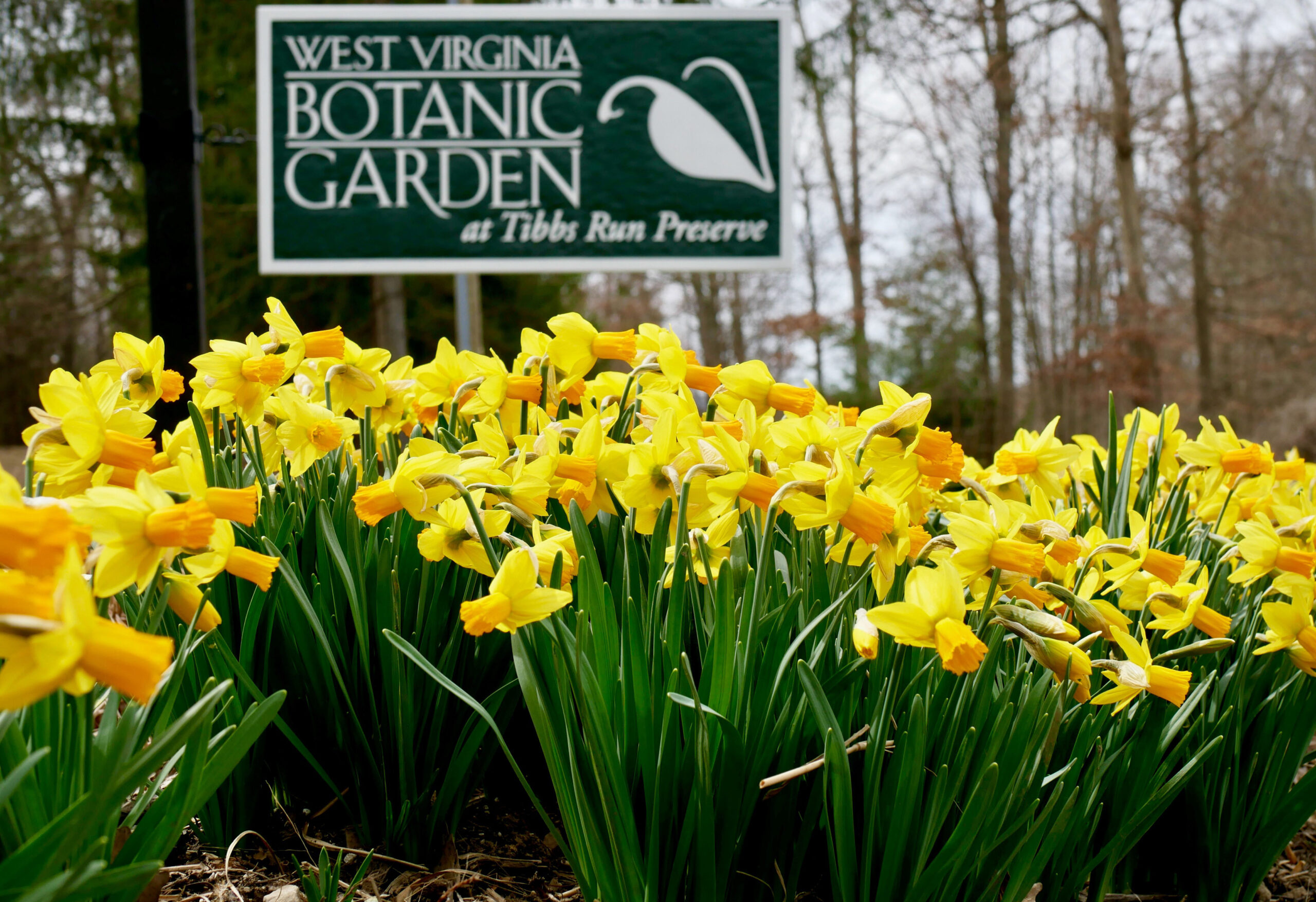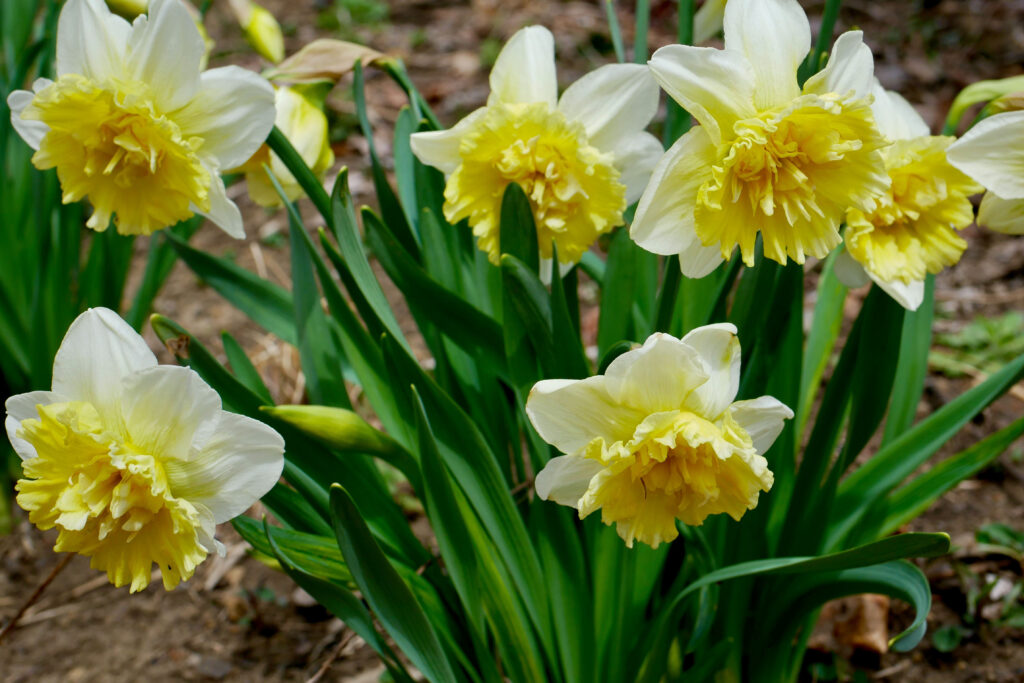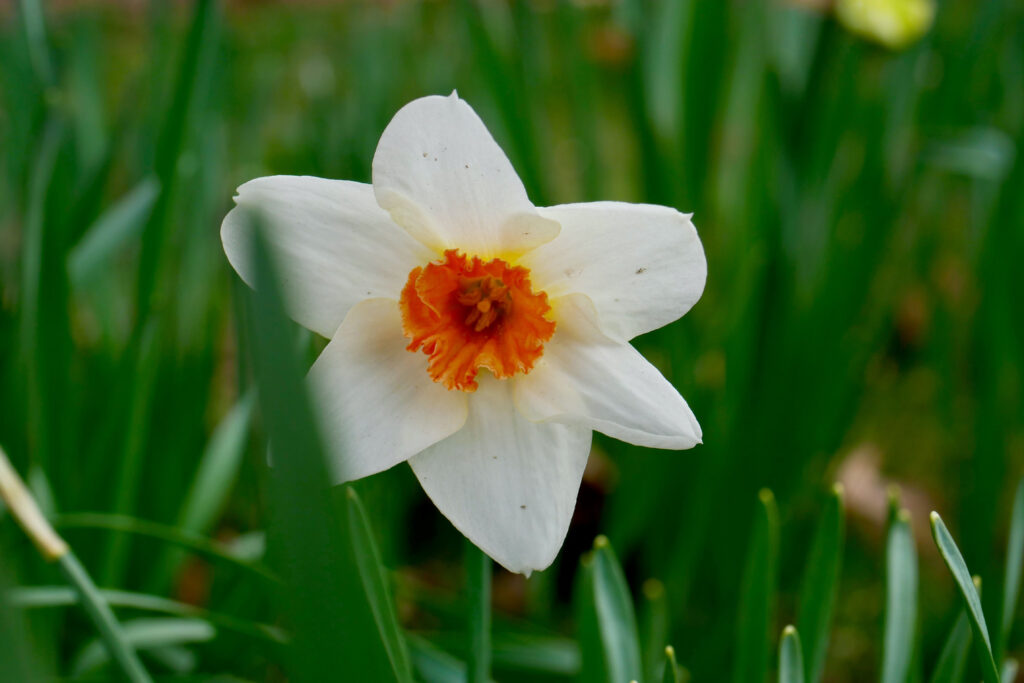By David P. Davis
Newsroom@DominionPost.com
Narcissus is a large genus of perennial plants in the family Amaryllidacaea with common names of daffodil and jonquil. Daffodils are generally white and yellow, some with touches of orange. Their flowers vary quite a bit, but all have six petal-like tepals that surround a cup-shaped or trumpet-like corona. The corona distinguishes Narcissus from the rest of the Amaryllidacaea.
Humanity has a long cultural history with daffodils starting with the beautiful boy Narcissus in Greek mythology. In Egyptian times, Tazetta daffodils were used in ancient tombs, and even Ramses II had bulbs placed on his eyes at death. Daffodils represent rebirth in many western cultures, being one of the first flowers in spring. It is also used in many religious ceremonies.
There are over 27,000 registered varieties of daffodils. Luckily, botanists have developed Narcissus divisions to help us categorize what might be growing in our gardens.
Trumpet daffodils make up the first division. Each stem has a single flower and the length of the cup (corona) is as long or longer than the surrounding bloom (petal-like tepals). At the West Virginia Botanic Garden, we seem to have trumpet daffodils everywhere!
Large-cupped daffodils have cups about a third as long as the tepals. This division includes about 45% of all registered varieties. At the WVBG, we also have a large population of large-cupped daffodils.

Small-cupped daffodils have cups less than a third as long as the surrounding tepals. This is one of my favorite types as they often have an orange corona that makes me smile.
Double daffodils have double flowers. At the WVBG, we have these in the Yagle Garden, and they are quite impressive. In the last two years, however, they have fallen over rather quickly after opening due to their heavy flower heads.
Cyclamen daffodils have one flower per stem with tepals pulled back, giving them a windswept appearance. We have a large population of cyclamen daffodils near our entry sign.
The Tazetta group, noted for multiple small flowers at the head of a stalk and their wonderful fragrance, is another favorite of mine.
A great application for daffodils is to plant them in a lawn, perhaps with some crocuses. As true perennials, daffodils will come back each and every year, often forming larger clumps of flowers. At the WVBG, we have a large population on the lawn near the Tyrone Road entry. To keep daffodils healthy on lawn areas, simply avoid mowing down the plants until they have completely yellowed up and fallen over.
We also use daffodils throughout our flower beds to add spring color and complement the flowers to come. Daffodils are very deer tolerant due to an irritant in their sap, calcium oxalate — this same compound can cause skin irritation in humans, so be careful if you handle the cut flowers.
We have extensive populations of daffodils in the Eclectic Garden (near the upper parking area). Here, the daffodils share the spring show with hellebores, crocuses and even a few hyacinths.
Head on over to the West Virginia Botanic Garden, at 1061 Tyrone Road, and see how many different types of daffodils you can spot!








